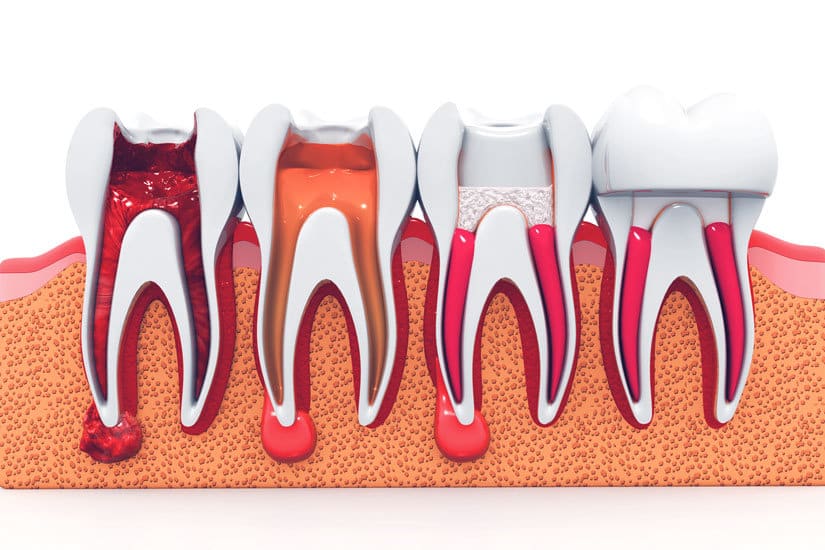Have you been told you might need a Root Canal Treatment in Chandler, AZ?
what is a root canal?
you might need
a root canal if you have…
An infection at the center of a tooth can cause a great deal of pain, hinder your eating and drinking and ultimately lead to the removal of your tooth. Our root canal treatment in Chandler, AZ is not painful and by eliminating the infection, can save a tooth that might otherwise have to be removed completely.
- severe pain while chewing or biting
- pimples on the gums
- chipped or cracked tooth
- lingering sensitivity to cold or hot, even after the sensation has been removed
- spontaneous throbbing pain
- swollen or tender gums
- deep decay or darkening of the gums

Distraction Methods – Therapeutic interventions – Pain management
what to expect during a root canal
Having a root canal typically involves one to two appointments at the office. Read on for timings and how to prepare.
Before having root canal treatment, you’ll usually be given a local anesthetic. This means the procedure should be painless and no more unpleasant than having a filling.
To treat the infection in the root canal, the bacteria need to be removed from the inside of your tooth. Beneath the white enamel of your tooth and a hard layer called dentin, there is a soft tissue called pulp. This tissue contains blood vessels, nerves and tissue which help grow the root of your tooth when it’s developing. A fully developed tooth can survive without the pulp because the tooth will be nourished by the tissue surrounding it.
After a small opening is made in the tooth, very small instruments clean the pulp from the canal and disinfect the area.
After the bacteria have been removed, the root canal is filled and the tooth sealed with a filling or crown.
In most cases the inflamed tissue near the tooth will heal naturally.
Preparing Yourself For A Root Canal
- Prepare your schedule after the appointment accordingly, as your mouth will feel numb for a few hours after your appointment.
- We encourage all of our patients to keep current with their dental cleaning/exams. We do not advise waiting for symptoms to develop before seeking care as this often represents a worsened oral health issue.
after your root canal…
Although you’re likely to be numb for 2-4 hours after your treatment, most patients are able to return to work or school following a root canal.
- Refrain from eating until the numbness is completely gone.
- Practice good oral hygiene at home–brushing twice a day with a fluoride toothpaste and using good flossing techniques.
It may take a few days for discomfort and sensitivity to go away after the procedure–particularly if you were suffering from pain before the treatment. Please contact the office if you have any concerns.
answering your questions about root canal…
Will a root canal hurt?
A modern root canal is similar to having a other common dental procedures like a filling so the biggest discomfort will come from the anesthetic applied and potentially from having your mouth open for the treatment. Having said that we practice techniques to eliminate as much discomfort as possible (see our section on patient comfort).
Our office starts with the strongest topical anesthetic to reduce the chance of feeling anything during the numbing process. Then we will numb the tooth and surrounding tissues with local anesthesia so you don’t feel any pain during the procedure.
In addition to our topical anesthetic, we utilize a painless oral injection system, DentalVibe®, to reduce any discomfort during the numbing process. DentalVibe is a unique tool that can help alleviate dental fear and anxiety, allowing you to undergo the treatments needed to maintain a healthy mouth. DentalVibe provides gentle vibration to the site of the dental injection that overloads the nerve that sends pain signals to the brain so you don’t feel the injection. Most patients who have a DentalVibe injection aren’t even aware they’ve had an injection! The vibrations disperse the anesthesia once it’s injected to allow it to get to work even faster…plus the sound of the vibration creates an added distraction!
DentalVibe is especially helpful in reducing dental fear among children. Many adult patients feel they wouldn’t have developed dental fears if they had this tool when they were younger.
You might experience some mild discomfort for a few days after the procedure. We can advise you on ways to handle this.
Will a root canal take care of an abscess?
Yes, a root canal is one way to treat a bacterial infection that causes an abscess. This is an effective treatment that could save the life of your tooth.
Is a root canal covered by insurance?
How long is a root canal appointment?
This depends on the condition of your tooth. We will give you closer guidance on this when scheduling your appointment, but roughly plan for 1-2 visits that take 90 minutes each.
Is it better to pull a tooth than have a root canal?
If there is an option to save your natural teeth, this is always the preferred option. A root canal treatment can eliminate the need for artificial replacements for extracted teeth. Root canals have a high success rate and many teeth with this treatment last a lifetime. Replacements for extracted teeth will cause more time in treatment and could result in additional procedures.
Have more questions? Please call us at 480-608-5444 or email us and we’ll be able to talk you through the process.
Wondering why you have pain after treatment, when you didn’t before?



